Akira Sasou
Ensembling Multilingual Pre-Trained Models for Predicting Multi-Label Regression Emotion Share from Speech
Sep 20, 2023Abstract:Speech emotion recognition has evolved from research to practical applications. Previous studies of emotion recognition from speech have focused on developing models on certain datasets like IEMOCAP. The lack of data in the domain of emotion modeling emerges as a challenge to evaluate models in the other dataset, as well as to evaluate speech emotion recognition models that work in a multilingual setting. This paper proposes an ensemble learning to fuse results of pre-trained models for emotion share recognition from speech. The models were chosen to accommodate multilingual data from English and Spanish. The results show that ensemble learning can improve the performance of the baseline model with a single model and the previous best model from the late fusion. The performance is measured using the Spearman rank correlation coefficient since the task is a regression problem with ranking values. A Spearman rank correlation coefficient of 0.537 is reported for the test set, while for the development set, the score is 0.524. These scores are higher than the previous study of a fusion method from monolingual data, which achieved scores of 0.476 for the test and 0.470 for the development.
Effect of different splitting criteria on the performance of speech emotion recognition
Oct 26, 2022Abstract:Traditional speech emotion recognition (SER) evaluations have been performed merely on a speaker-independent condition; some of them even did not evaluate their result on this condition. This paper highlights the importance of splitting training and test data for SER by script, known as sentence-open or text-independent criteria. The results show that employing sentence-open criteria degraded the performance of SER. This finding implies the difficulties of recognizing emotion from speech in different linguistic information embedded in acoustic information. Surprisingly, text-independent criteria consistently performed worse than speaker+text-independent criteria. The full order of difficulties for splitting criteria on SER performances from the most difficult to the easiest is text-independent, speaker+text-independent, speaker-independent, and speaker+text-dependent. The gap between speaker+text-independent and text-independent was smaller than other criteria, strengthening the difficulties of recognizing emotion from speech in different sentences.
* Accepted at TENCON 2021
Cross-dataset COVID-19 Transfer Learning with Cough Detection, Cough Segmentation, and Data Augmentation
Oct 12, 2022
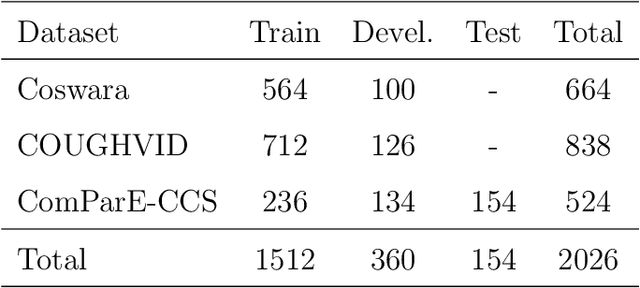
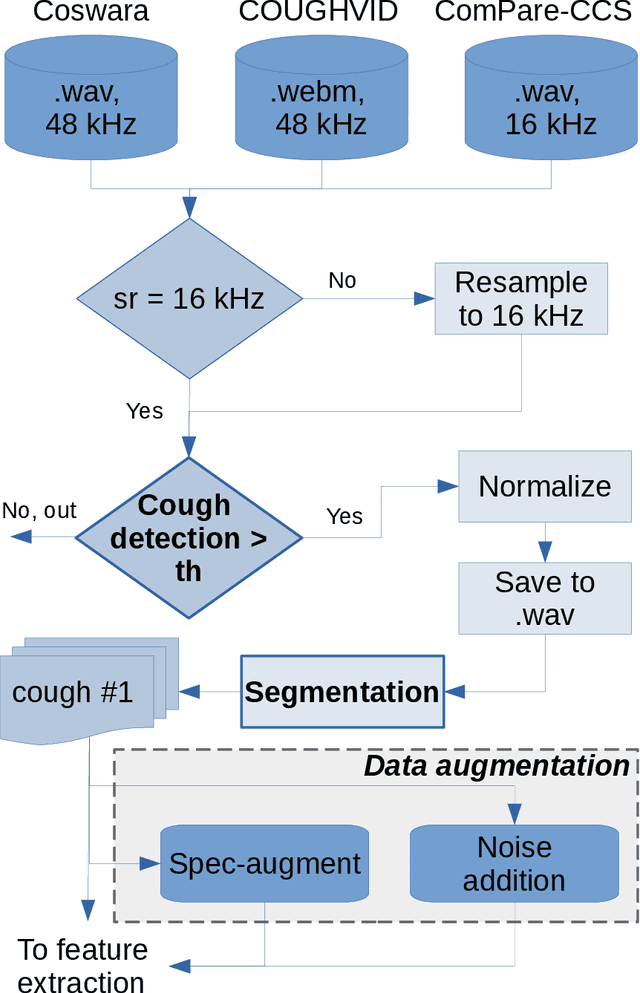
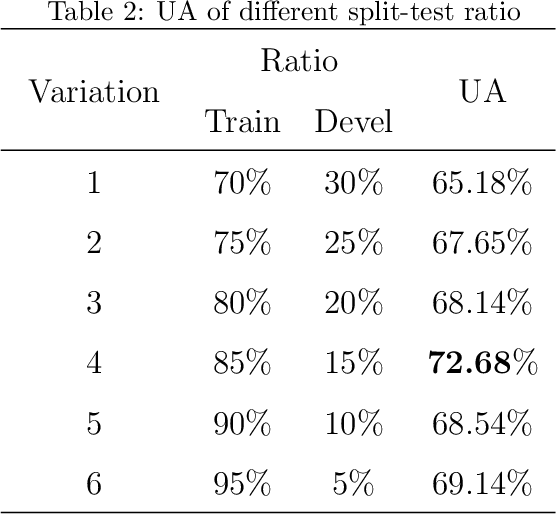
Abstract:This paper addresses issues on cough-based COVID-19 detection. We propose a cross-dataset transfer learning approach to improve the performance of COVID-19 detection by incorporating cough detection, cough segmentation, and data augmentation. The first aimed at removing non-cough signals and cough signals with low probability. The second aimed at segregating several coughs in a waveform into individual coughs. The third aimed at increasing the number of samples for the deep learning model. These three processing blocks are important as our finding revealed a large margin of improvement relative to the baseline methods without these blocks. An ablation study is conducted to optimize hyperparameters and it was found that alpha mixup is an important factor among others in improving the model performance via this augmentation method. A summary of this study with previous studies on the same evaluation set was given to gain insights into different methods of cough-based COVID-19 detection.
Evaluation of Automatic Single Cough Segmentation
Oct 05, 2022
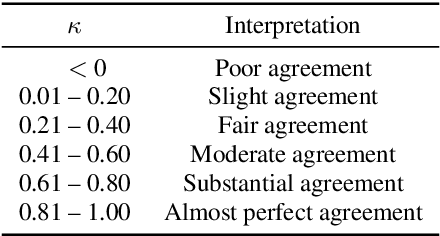


Abstract:Research on diagnosing diseases based on voice signals currently are rapidly increasing, including cough-related diseases. When training the cough sound signals into deep learning models, it is necessary to have a standard input by segmenting several cough signals into individual cough signals. Previous research has been developed to segment cough signals from non-cough signals. This research evaluates the segmentation methods of several cough signals from a single audio file into several single-cough signals. We evaluate three different methods employing manual segmentation as a baseline and automatic segmentation. The results by two automatic segmentation methods obtained precisions of 73% and 70% compared to 49% by manual segmentation. The agreements of listening tests to count the number of correct single-cough segmentations show fair and moderate correlations for automatic segmentation methods and are comparable with manual segmentation.
Predicting Affective Vocal Bursts with Finetuned wav2vec 2.0
Sep 27, 2022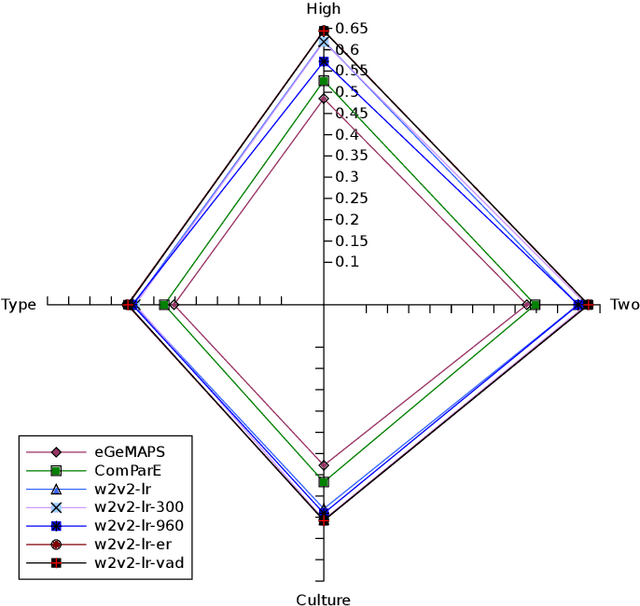


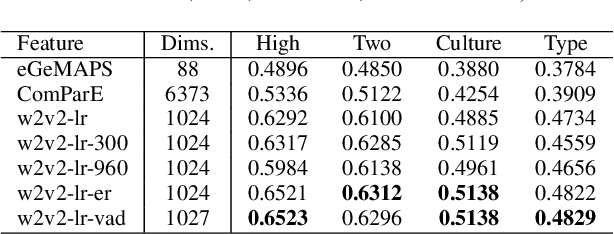
Abstract:The studies of predicting affective states from human voices have relied heavily on speech. This study, indeed, explores the recognition of humans' affective state from their vocal burst, a short non-verbal vocalization. Borrowing the idea from the recent success of wav2vec 2.0, we evaluated finetuned wav2vec 2.0 models from different datasets to predict the affective state of the speaker from their vocal burst. The finetuned wav2vec 2.0 models are then trained on the vocal burst data. The results show that the finetuned wav2vec 2.0 models, particularly on an affective speech dataset, outperform the baseline model, which is handcrafted acoustic features. However, there is no large gap between the model finetuned on non-affective speech dataset and affective speech dataset.
Jointly Predicting Emotion, Age, and Country Using Pre-Trained Acoustic Embedding
Jul 21, 2022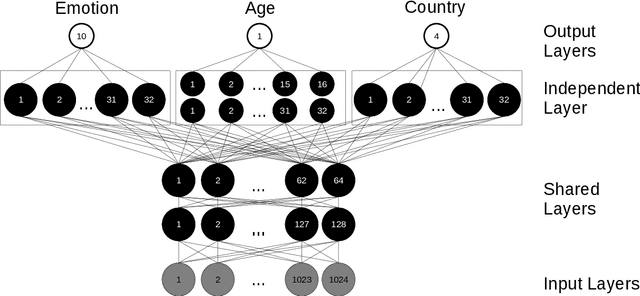

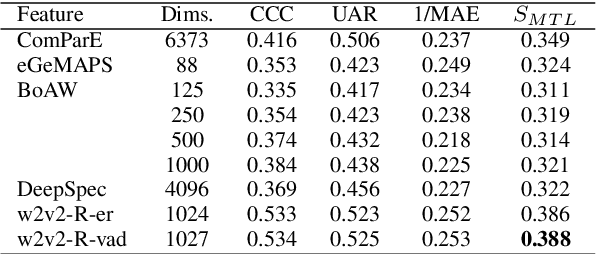

Abstract:In this paper, we demonstrated the benefit of using pre-trained model to extract acoustic embedding to jointly predict (multitask learning) three tasks: emotion, age, and native country. The pre-trained model was trained with wav2vec 2.0 large robust model on the speech emotion corpus. The emotion and age tasks were regression problems, while country prediction was a classification task. A single harmonic mean from three metrics was used to evaluate the performance of multitask learning. The classifier was a linear network with two independent layers and shared layers, including the output layers. This study explores multitask learning on different acoustic features (including the acoustic embedding extracted from a model trained on an affective speech dataset), seed numbers, batch sizes, and normalizations for predicting paralinguistic information from speech.
 Add to Chrome
Add to Chrome Add to Firefox
Add to Firefox Add to Edge
Add to Edge